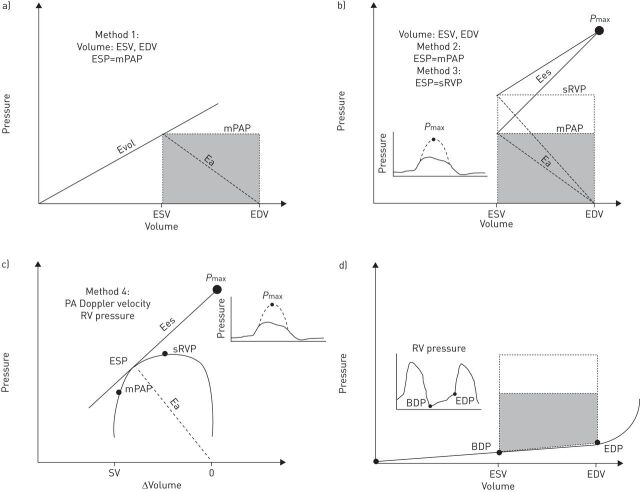Figure 2.
The a) volume, b) pressure, c) single-beat and d) diastolic stiffness methods used to estimate right ventricular (RV)–arterial coupling and diastolic stiffness. a, b), Arterial elastance (Ea) is calculated from the ratio of end-systolic pressure (ESP) to stroke volume (SV). a) End-systolic elastance (Ees) as an approximation of maximum elastance is estimated by the ratio of ESP to end systolic volume (ESV), which results in a simplified Ees/Ea of SV/ESV. b) Maximum pressure (Pmax) is estimated from the non-linear extrapolation of the early systolic and diastolic portions of the RV pressure curve. Ees is then the ratio of Pmax−mPAP/SV, where mPAP is mean pulmonary artery pressure. This results in a simplified Ees/Ea of Pmax/ESP−1. c) Ees is calculated as a straight line drawn from the Pmax tangent to sRVP–relative change in volume relationship. d) Diastolic stiffness (β) is calculated by fitting the non-linear exponential, P = α(eVβ−1), to the pressure and volume measured at the beginning of diastole. Where P is pressure, α is curve fit constant and V is volume. EDV: end diastolic volume; Evol: Ees by the volume method; sRVP: systolic RV pressure; PA: pulmonary artery; BDP: beginning diastolic pressure; EDP: end-diastolic pressure. Reproduced from [17] with permission from the publisher.

